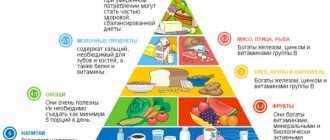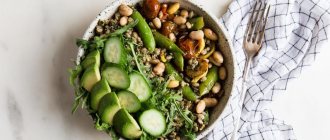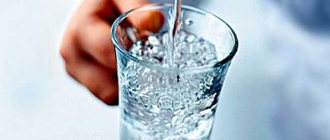I remember my children eating extremely healthy food at a young age. Zucchini and apple puree - no salt, no sugar, just like in the advertisement. But they were getting older. More and more often, friends' birthdays with pizza, french fries and soda came their way. More and more often they were treated to sweets. And they liked steamed vegetables and cutlets made from chicken breast and rolled oats less and less. In adolescence, the question of how to feed a teenager healthy food has become more relevant than ever. And the reasons were different. The daughter is prone to excess weight and the period of chocolate diets gave way to raids on the refrigerator. The son did not like to eat at the table and could only eat milk and cookies. I often grabbed everything that came to hand and that I could eat without leaving my computer and textbooks.
About adolescence
It is customary to divide adolescence into three stages:
- Early adolescence (11-12 years): Puberty begins and cognitive development increases.
- Middle adolescence (13-15 years): characterized by an increased desire for independence and experimentation in relationships with others.
- Late adolescence - youth (16 - 21 years old): the time for making important decisions in matters of finding one’s place in society and acquiring a profession.
At any time between these stages, it is extremely important to eat a balanced diet. Since poor nutrition can lead to problems with the harmonious development of all organs and unpleasant aspects in cognitive development. Lack of nutrients is the cause of decreased concentration and attention. This provokes disruption of academic performance and failure in studies. But the worst thing is that in addition to lethargy and lack of concentration, the child can develop health problems.
The meaning of fats

Many people believe that the body does not need fats at all, and when creating a menu for a teenager, it is better to do without them altogether. However, this is fundamentally wrong. Fat is also an important source of energy. In addition, cholesterol, hated by many, is part of sex hormones and adrenal hormones.
Of course, excessive consumption of fat is harmful to the body. It can lead to the development of atherosclerosis and obesity. And this is the background for the development of many cardiovascular (coronary heart disease, hypertension) and endocrine diseases (diabetes mellitus).
The optimal solution is to give preference to vegetable fats over animal fats. They are found in corn and sunflower oil, fish oil. It is interesting that sunflower and other vegetable oils have benefits for the body only in their primary form (for example, in salads), while they are of no value when fried or baked.
What are the consequences of poor nutrition among teenagers?
Due to chaotic eating with incorrect and harmful foods, the risk of chronic diseases increases: diabetes, cardiovascular problems. These diseases can lead to the onset of obesity. If your teen's diet doesn't have enough iron, he or she may be at increased risk for iron deficiency anemia. Most often, average teenagers consume sweet, carbonated drinks, fast food, chips, pizza, and other unhealthy foods. But the consumption of vegetables and fruits, whole grains may be neglected. And such a diet for a teenager simply does not allow the body to receive useful components, which leads to the following problems:
- frequent fatigue;
- dizziness;
- decline of the immune system;
- dental problems;
- joint pain;
- fragility of bones, high risk of fractures;
- slow growth;
- menstrual irregularities.
It is important to know what proper nutrition should be for teenagers. After all, no parent wants to see their child unhealthy.
Method 1
Take a large bag, collect candy, sausage, cookies, chips in it and throw it away. Buy exclusively healthy products, hang a poster in the kitchen “We will now live in a new way” and steam it, without oil or salt. It's not tasty? But it's useful! Cancel birthdays and visits. Do not give pocket money.
What is the result? A hunger rebellion - and not just a teenage one - and the overthrow of the power of the hated steamer. This method doesn't suit me. At this difficult age there are already enough problems. You shouldn't get into conflict over food.
Important microelements needed by the teenage body
The body needs to receive a full range of vitamins.
Calcium
One of the important components is calcium. It helps strengthen bones, teeth and hair. By getting enough calcium from an early age, you can protect yourself from bone problems in the future, as the body will accumulate calcium and strengthen itself with it. Calcium affects muscle contraction and relaxation, participates in the process of blood clotting, plays the role of anti-stress and performs many other useful functions. Milk, dairy products, hard cheeses, cabbage, beans, various nuts, seeds, rice, lentils, broccoli contain calcium.

Squirrels
It is also important to control the amount of protein. This component is known to everyone for its importance for muscle growth and strengthening. Sufficient amounts of protein are needed not only by athletes who are building muscle mass, but also by teenagers to provide enough energy to build muscles and tissues of internal organs. Proper nutrition for a 15-year-old teenager must contain high-protein foods that will help him get stronger and maintain a high level of energy. A diet rich in protein helps you lose excess fat while strengthening your muscles.

You can get protein from lean meat, poultry, fish, beans, nuts, eggs, and tofu. This can also include seafood (lobsters, squid, mussels, shrimp, crabs); milk with any percentage of fat content, half-fat cottage cheese, kefir, yoghurts.
Fats
Fat is an integral nutritional component that helps adolescents’ bodies grow, develop harmoniously and actively. It is responsible for the health of hair, skin, nails and gives energy. A teenager should consume 25 to 35% fat of total calories each day.

Unsaturated fats will always be useful as long as their amount in the body does not exceed the norm (after all, they carry too many calories). The best sources of fat for the body:
- olive, rapeseed, sunflower, corn and soybean oil;
- fish such as salmon, trout, tuna, whitefish;
- nuts: walnuts, almonds, peanuts, cashews or others.
Saturated fats, unlike unsaturated fats, do dirty work in the body and are of little use. They can have a detrimental effect on arteries, clogging them, and increase the risk of cardiovascular diseases, and we have already mentioned what this leads to. Saturated fat is found mainly in animal products and some vegetable oils:
- butter;
- whole milk;
- cheese;
- fat meat;
- coconut and palm oil.
Trans fats are the most dangerous group for the body and do not provide any benefit. They are found in:
- baked goods such as cookies, buns, muffins, donuts;
- dry snacks, such as crackers, chips;
- margarine;
- fried food.
Iron
Proper nutrition for a 16-year-old teenager must contain iron. For boys, iron is very important, because their rapid growth and increase in muscle mass require external support. And for girls, iron is important not only to maintain growth, but also to compensate for blood loss during menstruation. To get iron, eat the following foods:
- Fish and seafood;
- lean beef;
- cooked legumes: peas, beans, beans;
- buckwheat;
- white cabbage;
- potatoes boiled in their jackets;
- spinach.
Diet therapy for allergic diseases in adolescents
What principles should be followed when preparing a therapeutic diet for a patient with allergies? What foods most often cause allergic reactions? What should a doctor do when examining and treating a patient with polyvalent sensitization?
Diet therapy is an important component of the complex treatment of any disease. Properly structured, adequate nutrition allows you to provide the body with the necessary nutrients in accordance with the age-related needs of a person. For allergic diseases, diet therapy helps to more quickly achieve and maintain remission of the disease.
Considering diet therapy for allergic diseases in adolescents from the standpoint of the modern theory of adequate nutrition [1], it should be emphasized the need to prescribe to the patient a balanced diet that is adequate to his needs in terms of quantity and quality (set of nutrients), the nature of culinary processing of food, the rhythm of nutrition, as well as the state of enzyme systems body. Particular importance in the theory of adequate nutrition is given to the role of food ballast substances as a factor that contributes to maintaining the health of the entire macroorganism-microflora ecosystem. In case of illness, therapeutic nutrition should be prescribed taking into account the pathogenetic mechanisms of the disease, the condition of various organs and systems.
In this case, adequate nutrition is aimed at normalizing metabolic processes and impaired functions of internal organs and systems, which contributes to the patient’s recovery.
When preparing a therapeutic diet for a patient with an allergic disease, the clinician is traditionally guided primarily by the principle of elimination - products containing causally significant allergens and cross-allergens are excluded; products with high sensitizing activity; containing artificial food additives; promoting histamine liberation; containing large amounts of histamine and other biogenic amines. It should be emphasized that the second, no less important principle is the adequate replacement of excluded products in order to maximize the correction of the quantitative composition of the diet in terms of main nutrients. The third principle of constructing a therapeutic diet is adherence to “functional nutrition” - the use of foods in the diet that are most beneficial for achieving and maintaining the health of a child or adolescent.
Elimination diets are effective in patients with various clinical manifestations of allergies: atopic dermatitis, bronchial asthma, hay fever, Quincke's edema, urticaria. However, diet therapy becomes most important in cases where the existing clinical manifestations are caused by the presence of food allergies [2]. The diet of this category of patients, of course, requires the most careful and painstaking correction, however, the effect of properly administered diet therapy can be very significant.
Exclusion of causally significant foods is carried out on the basis of patient examination data, which includes a thorough collection of anamnesis, taking into account information about intolerance to certain foods, and, if necessary, keeping a food diary. The most accurate and specific method of examining a patient to identify food allergies is an open elimination-provocative test. In cases where it is difficult to carry out, as well as in cases of polyvalent sensitization and the impossibility of excluding a wide range of foods from the diet for a long time, research methods such as the determination of specific antibodies of various classes (IgE and IgG) to food proteins in vitro are of undoubted value, skin tests, provocative sublingual tests. The most frequently identified cause-significant food allergens in adolescents include fish and seafood, eggs, chicken, citrus fruits, nuts, and honey. It should be noted that even a thorough examination does not always make it possible to differentiate the manifestations of food allergies and reactions to food of a non-immune nature (so-called pseudo-allergic reactions to food). This is explained by the fact that the same food products can cause both reactions associated with the production of specific antibodies and nonspecific intolerance reactions caused by the liberation of histamine and other biogenic amines (Table 1), the presence of food additives in food products introduced during the process production (Table 2) [3, 4, 5]. Regardless of the form of food intolerance - an allergic reaction or a non-immune reaction to food, if there are pronounced clinical signs of intolerance to a particular product, it is recommended to completely exclude it from the diet for a long period. The “pseudo-allergic” type of food intolerance is often indicated by the “dose-dependent” nature of the reaction. In such cases, it may be possible to include a small amount of the partially tolerated product in the adolescent's diet. In this case, the question of the quantity of the introduced product is decided individually.
When prescribing an elimination diet, the possibility of cross-sensitization between different groups of allergens should also be taken into account (Table 3).
It should be noted that even if a teenager suffering from one or another allergic disease does not have signs of food allergy itself, to reduce the overall histamine load on the body, a nonspecific hypoallergenic diet should be recommended - diet No. 5ga [6].
The purpose of diet No. 5ga is to reduce the antigenic effect of food on the child’s body and create conditions for normalizing the functional state of the digestive organs. The content of basic nutrients and energy value of diet No. 5ga correspond to the age-related physiological needs of children. Products and dishes that have increased sensitizing activity, containing food additives (dyes, preservatives, emulsifiers, flavors, as well as dishes that have the properties of nonspecific irritants of the gastrointestinal tract) are excluded from the diet (Table 4). Fried foods and the use of broths are excluded; foods are boiled or steamed, baked or stewed after boiling. Food temperature is from 20 to 60°C. Eating 5 times a day. Table 5 presents approximate average daily sets of products in diet No. 5ga for teenagers.
The principle of adequate nutrition
Adolescence, which is one of the critical periods of ontogenesis, is characterized by rapid growth rates. In this regard, it is extremely important that a teenager’s diet meets his physiological needs. At the same time, the results of population studies of the nutritional status of large groups of the Russian population indicate a decrease in the intake of various micro- and macronutrients into the body of children, and especially adolescents [7, 8, 9]. The most pronounced deficiency of a number of vitamins is observed in adolescents, while deep deficiency is more common in boys.
We analyzed the actual nutrition of 72 adolescents who were treated in the allergological department of the Research Institute of Pediatrics of the Scientific Center for Children of the Russian Academy of Medical Sciences using a questionnaire method. As a study of the average daily diets of adolescents has shown, in most cases significant deviations from the recommended intakes of essential nutrients are revealed, and often a significant imbalance of nutrition. Thus, a deficiency of protein consumption in the diet of more than 20% compared to the age norm was identified in 53% of cases, while in 11% of adolescents it exceeded 50%. An analysis of fat consumption showed a deficiency of more than 20% of the age norm in 44% of adolescents, a deficiency exceeding 50% in 8% of those examined. Significant deviations were also noted when analyzing carbohydrate consumption, as well as the energy value of the diet. In general, only 11% of children in the group had a diet that met age-specific needs for all major nutrients. The reasons for this are different: only in 28% of patients in the examined group, the cause of inadequate nutrition can be considered restrictions associated with intolerance to certain foods. Table 5 presents the main food groups that are most often subject to restrictions when following elimination diets and the associated possible nutrient deficiencies. However, in most cases, eating disorders are explained by the peculiarities of eating habits: in particular, in girls - with dietary restrictions on their own initiative in order to lose weight, as well as other psychological aspects of nutrition. Thus, replacing “unloved” dairy products with sweet carbonated drinks, chips and cookies leads to the fact that in half of the cases the calcium content in the diet of adolescents does not exceed 50% of the age norm.
If it is necessary to exclude such valuable protein products as milk, fish, chicken from the diet, meat, fermented milk and soy products are used (taking into account tolerance) to correct the protein component of the diet.
The most difficult aspect of diet adaptation is the correction of its micronutrient composition: the content of vitamins, minerals, essential amino acids, polyunsaturated fatty acids, etc. (Table 6). Children who have been suffering from allergic diseases for a long time and especially those receiving elimination nutrition are often deprived of important sources of vitamins (fruits, vegetables and dairy products, eggs, cereals), calcium (milk and its derivatives), iodine (fish and seafood), etc. It should be emphasized that it is not always possible to balance a therapeutic diet by using only natural food products: the use of special medicinal products and approved [10] biologically active additives (BAA) - nutraceuticals, which allow you to correct existing nutrient deficiencies - is often required.
Limited consumption of foods containing calcium is a serious prerequisite for the development of osteoporosis [11]. Achieving normal peak bone mass in adolescents depends on the amount of dietary calcium consumed. Long-term exclusion or restriction of such an important source of calcium as dairy products from the diet of adolescents with allergies can lead to calcium deficiency in the body. The situation is aggravated by smoking or drinking alcohol, which reduce the absorption of calcium in the body, as well as due to excessive enthusiasm among young people for drinks such as Coca-Cola, as a result of which phosphorus consumption increases and bone formation is impaired. Another important factor contributing to the development of osteoporosis in children with allergic diseases is the use of glucocorticoid therapy. In this regard, dietary measures for a teenager with allergies should be carried out taking into account the correction of calcium intake both through food products, such as dairy and specialized products fortified with calcium, and with the use of pharmacological drugs (calcium lactate, calcium glycerophosphate, calcium-D3 and etc.).
Studies examining the iodine supply of various age groups of the population show that, against the background of a high need for iodine in adolescence (200 mg/day), it is in this age group that the most significant iodine deficiency is observed [12]. In children who suffer from allergic diseases for a long time, especially in cases of long-term adherence to elimination diets, from which such important sources of iodine as fish and seafood are excluded, the problem of iodine deficiency in the diet is even more acute. In order to prevent iodine deficiency in the diet, the following should be used: iodized salt, iodine-bromine mineral waters, iodine-enriched food products, iodine-rich seaweed, both in natural form and in the form of iodine-containing dietary supplements (klamin, kelp, fucus, iodine-active, energolam-plus). If it is impossible to create a diet that meets the need for iodine, as well as in cases of clinical manifestations of iodine deficiency, correction should be carried out using long-term use of iodine-containing drugs. It should be borne in mind that regardless of the methods of replenishing iodine, it is most optimally absorbed with sufficient protein, iron, zinc, copper, vitamins A and E in the diet.
Long-term exclusion of fish from the diet leads to insufficient intake of such essential nutritional factors as polyunsaturated fatty acids (PUFAs) of the ω-3 class (linolenic, eicosapentaenoic, docosopentaenoic and docosohexaenoic), contained mainly in fish oil and some vegetable oils ( pumpkin, flax). ω-3 fatty acids play an important role in the metabolism of phospholipids and contribute to the stabilization of cell membranes, influence immune functions by activating the macrophage-plasma cell reaction in lymphoid organs, and affect tissue hormones - prostaglandins involved in the regulation of T-lymphocyte formation. The listed properties underlie the hypoallergenic and immunocorrective effect of ichthyene fat in patients with allergic pathology. To increase the content of ω-3 PUFAs in the diet, special food additives of marine (polyene, eikonol) or vegetable (pumpkin, linseed oil, ecolen) origin are used. Fat nutraceuticals do not contain protein and carbohydrate components; they can be prescribed to adolescents in therapeutic doses (3–6 g/day) during the subacute period of the disease, as well as during the period of remission for preventive purposes in doses from 2 to 4.5 g/day for 30 –40 days. The use of these drugs in children with atopic dermatitis helps reduce atopy, itching, peeling of the skin, as well as restore their elasticity, and prolongs the remission of the disease.
An important pathogenetic mechanism of many diseases, including allergic ones, is “oxidative stress,” which is accompanied by excessive production of reactive oxygen species. In this regard, it is of great importance to use foods with antioxidant properties in the diet, primarily fresh vegetables and fruits, as well as study the possibility and effectiveness of using antioxidant drugs in adolescents with allergies. It is known that insufficient supply of an antioxidant such as selenium is a factor contributing to the development of allergic diseases. We studied the provision of one of the most important antioxidants - selenium - in children and adolescents with allergic diseases. A study of the level of selenium in the blood serum in 67 patients aged 6 to 16 years suffering from allergic diseases (bronchial asthma, atopic rhinitis, atopic dermatitis) showed that the supply of selenium for this category of patients varied significantly and in general was not lower than on average among Moscow children of the same age. Correction of selenium status was carried out by prescribing dietary supplements containing organic selenium. 16 patients received the dietary supplement Vitasil-Selenium (Russia), including autolysate of selenium-containing baker's yeast, 19 children received the dietary supplement Lunovit Plus (Russia), including autolysate of selenium-containing baker's yeast and tocopherol. The advantage of these drugs is that they contain selenium in organic form. It differs from inorganic selenium in its higher bioavailability and wide range of therapeutic effects. The control group consisted of 20 children who were not prescribed selenium-containing dietary supplements. As a result of taking nutraceuticals in children, an improvement in the supply of selenium was established with a high degree of reliability, against the background of which there was a pronounced tendency towards normalization of certain indicators of lipid peroxidation. The use of dietary supplements containing tocopherol (Viardot) and β-carotene (Vetoron) in patients with allergies has also been confirmed.
The concept of functional nutrition is based not only on the nutritional properties of food, but is also built taking into account the characteristics of the biologically active components contained in food products [13, 14]. The most widely used products at present are those containing pro- and prebiotics, dietary fiber and other components that help maintain normal microbiocenosis of the gastrointestinal tract, improve digestion processes and thereby help maintain the body’s defenses (Table 6). Most adolescents with allergic diseases experience certain dysfunctions of the digestive organs; quite often, gastritis and gastroduodenitis, biliary dyskinesia, and intestinal dysbiosis are detected as concomitant pathologies. The intestinal biocenosis plays a huge role in maintaining the health of the macroorganism. Endogenous flora is considered one of the most important components of the intestinal barrier, providing antagonistic activity against opportunistic and pathogenic bacteria, as well as stimulation of local immune defense. The most important function of microbiocenosis is its participation in metabolic processes, the synthesis of a number of vitamins, amino acids, and growth factors.
Disturbances in the composition of the intestinal microflora as a component of the intestinal barrier can lead to the development of food sensitization and the intensification of existing manifestations of food allergy through various mechanisms. It is known that some toxins of opportunistic bacteria increase the permeability of the intestinal barrier to macromolecules. The direct triggering effect of bacteria on allergy target cells through both a specific IgE-mediated pathway and a nonspecific lectin-dependent type of histamine liberation has also been described. Active vegetation of opportunistic bacteria in the intestinal lumen may also be associated with the development of bacterial sensitization.
Probiotic preparations in dosage forms are widely used for the correction and prevention of microecological disorders of the intestine. However, for patients with food allergies, especially against the background of reactive changes in the digestive organs, often leading to accelerated transit of chyme through the gastrointestinal tract, the most adequate form of administering probiotics is to administer them in a viable state, for example, including them in fermented milk products. This shortens the latent period of action of the probiotic, due to its release from suspended animation caused by lyophilization. It is especially important that with probiotic products the patient receives a complex of biologically active substances that improve the function of the digestive system. Table 7 lists factors that contribute to the colonization of the intestine by normal microflora. In particular, for milk protein intolerance, fermented soy-based products have proven themselves well.
In this regard, when prescribing a therapeutic diet, it is necessary to use fermented milk products in the diet, as well as products with the addition of probiotics. In addition, foods rich in dietary fiber with prebiotic properties or special foods fortified with prebiotics should be recommended; if necessary, as a supplement to nutrition, dietary supplements containing dietary fiber can be prescribed.
As noted earlier, in adolescence, not only the nutritional properties of food, but also the psychological aspects of nutrition, which are called “problems of food preferences” in the literature, become of great importance [15]. When prescribing nutritional therapy for a teenager, the doctor is often faced with a negative attitude towards the need to follow a diet. This is often due to the fact that the dietary or simply healthy products offered are outside the area of adolescents’ food preferences, which were formed partly under the influence of advertising and the social environment. In cases where the diet is followed, psychological problems of two kinds may also arise. On the one hand, with long-term adherence to the elimination regime, a whole complex of psychological deviations is formed, caused by the ban on taking certain products; on the other hand, violating the diet entails the formation of a certain complex of guilt and dissatisfaction with oneself. In this regard, recommendations for a teenager’s nutrition should be discussed not only with parents, but also, first of all, with the patient himself, with his active participation. Conducting diet therapy in patients in this age category becomes possible only if it is possible to interest the teenager himself; psychological support from the family, environment or a psychologist is also desirable.
Thus, when preparing a diet for a teenager suffering from an allergic disease, attention should be paid not only to the elimination regimen, but also to how well the proposed diet meets the needs of a rapidly growing body for basic nutrients, as well as microelements and vitamins. Correction of the diet is carried out by replacing excluded products, taking into account tolerance (and, if possible, food preferences) with similar ones in composition; it is advisable to use special therapeutic and preventive products enriched with vitamins and microelements, “functional food” products, and, if necessary, dietary supplements.
Literature
- Ugolev A. M. Theory of adequate nutrition and trophology. - St. Petersburg: Nauka, 1991. - 271 p.
- Guide to therapeutic nutrition for children / Ed. K. S. Ladodo. - M.: Medicine, 2000. - 384 p.
- Pascual CY, Crespo JF, Perez PG, Esteban MM. Food allergy and intolerance in children and adolescents, an update. Eur J Clin Nutr, 2000 Mar, 54 Suppl 1. - S. 75-8.
- David T.J. Adverse reactions and intolerance to foods. Br Med Bull 2000, 56:1, 34 - 50.
- Taylor SL. Dormedy ES The role of flavoring substances in food allergy and intolerance. Adv Food Nutr Res, 1998, 42. - P. 1 - 44.
- Organization of therapeutic nutrition for children in hospitals (a manual for doctors) / Ed. A. A. Baranova, K. S. Ladodo. - 2001. - 239 p.
- Belyaev E. N., Chiburaev V. I., Ivanov A. A. et al. Characteristics of actual nutrition and health of children in the regions of the Russian Federation // Nutrition Issues. - 2000. - No. 6. — P. 3 — 7.
- Gorelova Zh. Yu. On the nutritional status of schoolchildren // Issues of children's dietology. - 2003. -T. 1. - No. 3. — P. 60 — 63.
- Vzhersinskaya O. A., Kodentsova V. M., Trofimenko A. V. et al. Vitamin and iron provision in school-age children // Issues of pediatric dietology. - 2003. - T. 1. - No. 5. — P. 56.
- Federal Register of Biologically Active Food Additives. - M., 2001.
- Baranov A. A., Shcheplyagina L. A. Problems of adolescence (selected chapters). - M., 2003. - 477 p.
- Kasatkina E. P. Iodine deficiency conditions in children and adolescents // Attending Physician. - 2000. - No. 10.
- Shenderov B. A. Human microbiocenoses and functional nutrition // Russian Journal of Gastroenterology, Hepatology, Coloproctology. - 2001. - T. XI. - No. 4. — P. 78 — 90.
- Roberfroid MB. Prebiotics and probiotics: are they functional foods? Am J Clin Nutr 2000 Jun 71:6 Suppl 1682S-7S.
- Ugolev D. A. Food preferences (analysis of the problem from the standpoint of adequate nutrition and trophology) // Russian Journal of Gastroenterology, Hepatology, Coloproctology. - 2001. - T. XI. - No. 4. — P. 52 — 63.
T. E. Borovik , Doctor of Medical Sciences, Professor S. G. Makarova , Candidate of Medical Sciences I. I. Balabolkin , Doctor of Medical Sciences, Professor N. V. Yukhtina , Doctor of Medical Sciences, Scientific Center for Children's Health of the Russian Academy of Medical Sciences, Moscow
Diet for teenagers, how to organize a proper nutrition menu for a teenager.
Teenagers have a fairly busy and active schedule; they spend half the day at school, in sections, clubs, and then sit at home with a mountain of homework, unless, of course, they go out with friends. But even with such turmoil, it is necessary to adhere to some kind of nutritional schedule. To organize your diet, a teenager needs to remember the following rules. Be sure to have breakfast!
A healthy, satisfying breakfast is the key to a successful day. Having had a good meal in the morning, the teenager will be more attentive in class and will be able to concentrate on objects. A proper nutrition menu for teenagers must contain complex carbohydrates for breakfast, as thanks to them, children remember better, their ingenuity works faster, and anxiety decreases. It is important to remember that by skipping breakfast, a teenager slows down his metabolism, and thereby may be at risk of gaining weight.

Watch your lunch.
It doesn’t matter where the teenager eats: at school or at home, but lunch must be complete and healthy. Buns and chocolates from the school buffet are not considered lunch. Unfortunately, from these the teenager receives only a lot of calories, which will not bring him any benefit.
This meal should cover one third of your food needs for the whole day. It is preferable to choose a first course for lunch or lean meat with porridge and vegetables. If a teenager does not have time to have a full lunch, then you need to take care of his healthy snack: fruits, vegetables, a sandwich with whole grain bread, chicken breast, dairy products or nuts.
Don't forget about dinner.
Even if the teenager had a full lunch, do not forget about dinner. The correct diet for teenagers involves eating healthy food at any time of the day. The option of eating chips in front of the TV does not at all fit with the healthy development of adolescents. Dinner should be a family time where the whole family gathers in the kitchen to eat together. So, without being distracted by foreign objects: a computer, TV or phone, the body will get the maximum benefit from food. After all, when young creatures are busy not with the process of absorbing food, but with watching a movie, they do not notice how much and what they eat, thereby causing overeating. A joint family dinner is a great opportunity to be with your family and share your achievements for the day.
Salads for teenagers

Few children and teenagers like salads, or vegetables in general. Fortunately, salad is a dish that gives free rein to imagination and improvisation.
If your child loves chicken, you can make a Caesar. If you have beef or pork, you can prepare a warm meat salad. Or you can move away from any recipes. For example, an ordinary vegetable salad can be diluted with a bright berry sauce, which a teenager will surely like. Vegetables also go well with applesauce and mustard sauce. Improvise, come up with new tastes, then your child will definitely discover salads from a new side.
What should teenagers eat to avoid gaining weight?
The issue of slimness and a beautiful body worries not only adults, but also teenagers. In particular, girls ask this question, worrying about gaining too much.
The first thing to do is to reduce your consumption of fast food to a minimum.
It's no secret that there is no place for pizza and burgers in the healthy nutrition menu for a teenager. But why? The fact is that they contain those same terrible trans fats, which can become the first step to weight gain, and simple carbohydrates, and they are also not friends for being slim. Of course, there is a huge sugar content in soda, which is always washed down with junk food. The amazing fact is that a portion of the McDonald's menu with a burger, potatoes and cola contains the daily calorie requirement for a teenager! But proper nutrition for a 15-year-old teenager includes a complete diet with healthy ingredients and microelements for the same amount of calories. Think about it!
You need to give up carbonated drinks.
Surely, many teenagers would prefer a glass of sweet lemon or other soda to tea. Not surprising, because they are so sweet and tasty that it’s hard to resist. But why did they taste like this? A lot of dyes, sugar, and inorganic components are found inside the bottle of your favorite soda. And drinking such drinks leads to skin problems, indigestion, weight gain and stomach problems.
The next step is to control portion sizes.
Conducted studies prove that a person will always eat more than he needs if the portion on the plate is large. Therefore, it is very important to remember portion control tips and use them.
- Don't eat in front of the TV. It's easy to lose count of what you've eaten if you're engrossed in watching;
- Eat slowly so that your brain has time to receive the message that your stomach is already full;
- Don't skip meals. This may cause you to eat more high-calorie food at your next meal.
Whole grain products
We can get a lot of useful energy from whole grains. Whole grain foods—such as whole grain bread, brown rice, and oatmeal—tend to have many more nutrients than processed grain foods. They give you a feeling of fullness even when consuming a small portion. Therefore, a proper diet for teenagers must contain whole grains.
Regime is important
A child from 11 to 14-15 years old should eat at least 4 times a day:
- Breakfast. During the first meal, he should consume up to 25% of the total calories.
- Dinner. The second meal is the largest - from 35 to 40% of all calories.
- An afternoon snack is a small snack that is equal to about 15% of daily calories.
- Dinner. The evening meal accounts for no more than 25% of the total calories.
Read more about organizing a proper diet for children and adults.
Attention! Evening meals should be planned 2 hours before bedtime.











